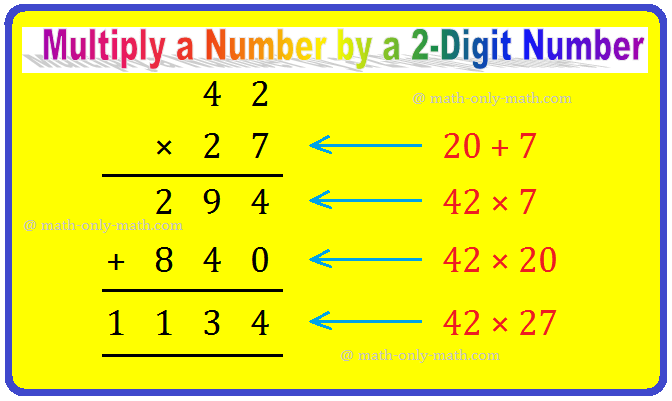Conjugate Hyperbola
What is conjugate hyperbola?
If the transverse axis and conjugate axis of any hyperbola be respectively the conjugate axis and transverse axis of another hyperbola then the hyperbolas are called the conjugate hyperbola to each other.
The conjugate hyperbola of the hyperbola x2a2 - y2b2 = 1 is - x2a2 + y2b2 = 1
The transverse axes of the hyperbola x2a2 - y2b2 = 1 is along x-axis and its length = 2a.
The conjugate axes of the hyperbola x2a2 - y2b2 = 1 is along y-axis and its length = 2b.
Therefore, the hyperbola conjugate to x2a2 - y2b2 = 1 will have its transverse and conjugate axes along y and x-axes respectively while the length of transverse and conjugate axes will be 2b and 2a respective.
Therefore, the equation of the hyperbola conjugate to x2a2 - y2b2 = 1 is - x2a2 + y2b2 = 1
Thus, the hyperbolas x2a2 - y2b2 = 1 and - x2a2 + y2b2 = 1 are conjugate to each other.
The eccentricity of the conjugate hyperbola is given by a2 = b2(e2 - 1).
Now we will come across various results related to the hyperbola x2a2 - y2b2 = 1 ……………. (i) and its conjugate - x2a2 + y2b2 = 1 ………………. (ii).
1. The co-ordinates of the centre of both the hyperbola (i) and its conjugate hyperbola (ii) are (0, 0).
2. The co-ordinates of the vertices of the hyperbola (i) are (-a, 0) and (a, 0) and its conjugate hyperbola (ii) are (0, -b) and (0, b).
3. The co-ordinates of the foci of the hyperbola (i) are (-ae, 0) and (ae, 0) and its conjugate hyperbola (ii) are (0, be) and (0, -be).
4. The length of the transverse axis of the hyperbola (i) is 2a and its conjugate hyperbola (ii) is 2b.
5. The length of the conjugate axis of the hyperbola (i) is 2b and its conjugate hyperbola (ii) is 2a.
6. The eccentricity of the hyperbola (i) is e = √a2+b2a2 or, b2 = a2(e2 - 1) and its conjugate hyperbola (ii) is e = √b2+a2b2 or, a2 = b2(e2 - 1).
7. The length of the latusrectum of the hyperbola (i) is 2b2a and its conjugate hyperbola (ii) is 2a2b.
8. The equation of the transverse axis of the hyperbola (i) is y = 0 and its conjugate hyperbola (ii) is x = 0.
9. The equation of the conjugate axis of the hyperbola (i) is x = 0 and its conjugate hyperbola (ii) is y = 0.
● The Hyperbola
- Definition of Hyperbola
- Standard Equation of an Hyperbola
- Vertex of the Hyperbola
- Centre of the Hyperbola
- Transverse and Conjugate Axis of the Hyperbola
- Two Foci and Two Directrices of the Hyperbola
- Latus Rectum of the Hyperbola
- Position of a Point with Respect to the Hyperbola
- Conjugate Hyperbola
- Rectangular Hyperbola
- Parametric Equation of the Hyperbola
- Hyperbola Formulae
- Problems on Hyperbola
From Conjugate Hyperbola to HOME PAGE
Didn't find what you were looking for? Or want to know more information about Math Only Math. Use this Google Search to find what you need.
Recent Articles
-
Properties of Multiplication and Division of Fractions Worksheet | Ans
Apr 10, 25 03:17 PM
In properties of multiplication and division of fractions worksheet you will get different types of questions based on properties of multiplication of fractional numbers and properties of division of… -
Word Problems on Fraction | Math Fraction Word Problems |Fraction Math
Apr 09, 25 01:44 AM
In word problems on fraction we will solve different types of problems on multiplication of fractional numbers and division of fractional numbers. -
Multiply a Number by a 2-Digit Number | Multiplying 2-Digit by 2-Digit
Apr 08, 25 01:13 PM
How to multiply a number by a 2-digit number? We shall revise here to multiply 2-digit and 3-digit numbers by a 2-digit number (multiplier) as well as learn another procedure for the multiplication of… -
Multiplication | How to Multiply a One, Two or Three-digit Number?
Apr 08, 25 01:08 PM
In multiplication we know how to multiply a one, two or three-digit number by another 1 or 2-digit number. We also know how to multiply a four-digit number by a 2-digit number. We also know the differ… -
Addition of 4-Digit Numbers | 4-Digit Addition |Adding 4-Digit Numbers
Apr 08, 25 12:43 PM
We will learn about the addition of 4-digit numbers (without carrying and with carrying). We know how to add 2 or 3, 3-digit numbers without carrying or with carrying.



New! Comments
Have your say about what you just read! Leave me a comment in the box below. Ask a Question or Answer a Question.